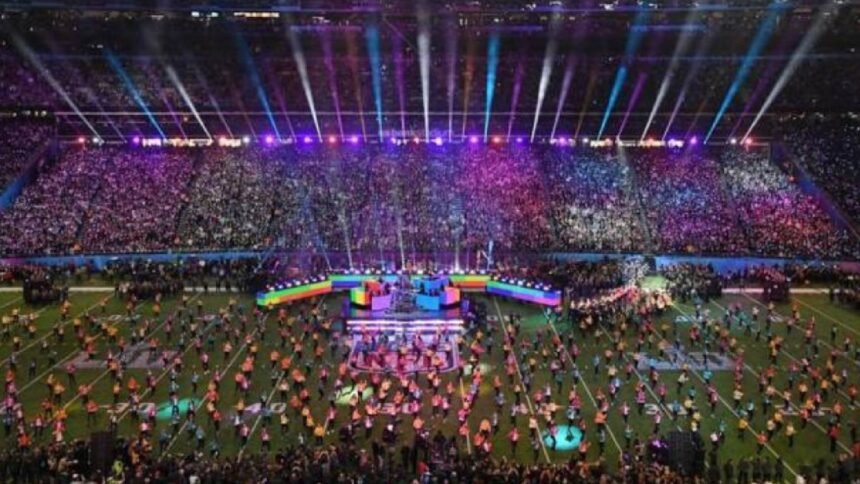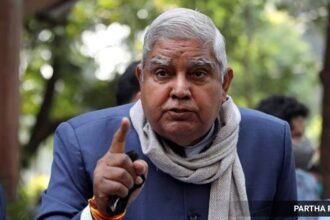In early May, Spanish football giants Barcelona unveiled a striking collaboration with Travis Scott, releasing limited-edition jerseys featuring the American rapper’s Cactus Jack logo for the El Clásico clash. Only 1,899 units priced at €399.99 and 22 signed jerseys at €2,999.99 were released. The kits were sold out within half an hour, earning Barcelona over €1.5 million.
Resale prices surged, with home jerseys traded at $2,000–3,000, while away versions ranged between $1,600 and 2,000. This was in comparison to a standard FC Barcelona Dri-FIT match jersey, which retails at around €195 or even less on Indian platforms.
The collaboration allowed Barcelona to tap into Scott’s global fanbase and build a narrative that went beyond football. It also introduced the artist to a new segment of fans and generated substantial media coverage for both parties. Such partnerships are not only about merchandise, they are about integrating entertainment and fashion into sports ecosystems.
In recent years, the Super Bowl halftime show has increasingly become the centre of attention, often overshadowing the game itself. This year, on February 9, Super Bowl LIX featured Kendrick Lamar as its halftime headliner, drawing 133.5 million viewers — surpassing the game’s average viewership of 127.7 million, itself a record for a Super Bowl. The halftime viewership peaked at 137.7 million and surpassed Michael Jackson’s 1993 record of 129.3 million.
Lamar’s performance led to an immediate 175 percent spike in Spotify streams, with the “Not Like Us” song alone resulting in an increase of 430 percent. Within 24 hours, Lamar became the most-streamed global artist, while singer-songwriter SZA reached No. 2 in the US charts.
The amalgamation of sports, fashion and music is no longer a trend, but a calculated use of power in today’s cultural landscape. What was once a clear distinction between athletes, musicians, and designers has now transformed into a permeable space where collaborations are not just common, but expected. From stadiums to streaming platforms, from limited-edition sneakers to halftime performances, the convergence of these industries is reshaping how audiences engage with sport, not merely as spectators, but as consumers of a broader cultural experience.
Synergy of forces
This shift is especially evident at major global events and high-profile collaborations, where music, artists and fashion labels now play a central role in the branding and marketing of sports.
Story continues below this ad
While the Super Bowl highlights this connection in American football, a similar relationship has long existed between basketball and fashion, particularly through the sneaker culture. The Air Jordan brand, introduced by Nike in 1985, revolutionised the way basketball merchandise was perceived. No longer just sportswear, Air Jordans became desirable fashion items. Since its creation, the brand has sold over 130 million pairs of shoes and has generated over $3.1 billion in revenue.
Beyond initial sales, the resale market for Jordans has created a parallel economy, valued in billions of dollars. Certain models, such as the Jordan 1, 4, and 11, continue to be popular across generations. This evolution has expanded the sport’s appeal to audiences who may not be traditional basketball fans, with sneakers acting as a way to get interested in the sport itself.
Scott’s entry into sneaker culture is another example of this cultural synergy. His 2017 Air Jordan 4 “Cactus Jack”, released before his Astroworld breakout, and subsequent Air Jordan 1 and 6 models, became market sensations. Scott’s AJ1 Retro High is now StockX’s eighth best-selling AJ1, trading at an average $1,093, representing a 524 percent premium over retail, and totalling over 21,000 trades. The AJ1 Low averaged $776 resale (499 percent premium), while the AJ6 Retro averaged $1,279 with a 412 percent premium. These figures far exceed typical sneaker collaborations, confirming Scott’s pull in merging music, fashion and the sport culture.
Another representation of this convergence is the Apple-produced film F1: The Movie, which released on June 27. With a production and distribution budget exceeding $250 million, it has grossed $397.6 million globally, making it Apple’s first major theatrical success. Its marketing featured brand tie-ins with companies like IWC Schaffhausen, Tommy Hilfiger, GEICO, and EA Sports, together contributing at least $40 million in sponsorship value.
Story continues below this ad
Win-win situation
Apple’s renewed interest prompted it to bid over $150 million annually for US Formula 1 streaming rights starting 2026, outbidding ESPN. F1’s US television audience has more than doubled since 2018, now averaging 1.3 million viewers per race, a growth accelerated by the documentary ‘Drive to Survive’ and the new film.
These examples point to a broader shift in how sport is consumed and marketed. Increasingly, sporting events serve as launchpads for artists, designers and brands. The appeal of sport is no longer limited to the game itself; it extends to what surrounds it such as music performances, clothing releases, and digital engagement. Artists gain exposure to large audiences, brands benefit from association with cultural icons, and sports organisations attract viewers who may not have previously followed the game. This model benefits all stakeholders and reflects the growing convergence of entertainment sectors.
The idea of a sports fan is also evolving. Today’s fans are more likely to engage with sport through fashion, music, and digital platforms than through traditional forms of viewership. Owning a jersey or a pair of limited-edition sneakers is now a way of signalling interest and allegiance, even among those who may not watch matches regularly. This shift is particularly evident among younger audiences, who often consume sports content through short clips, social media posts, and merchandise drops, rather than live broadcasts.
As the landscape continues to evolve, such cross-industry partnerships will likely become more common, reinforcing the idea that sport today is not just about competition; it is also about culture, community, and commerce.
(The writer is an intern with The Indian Express)








